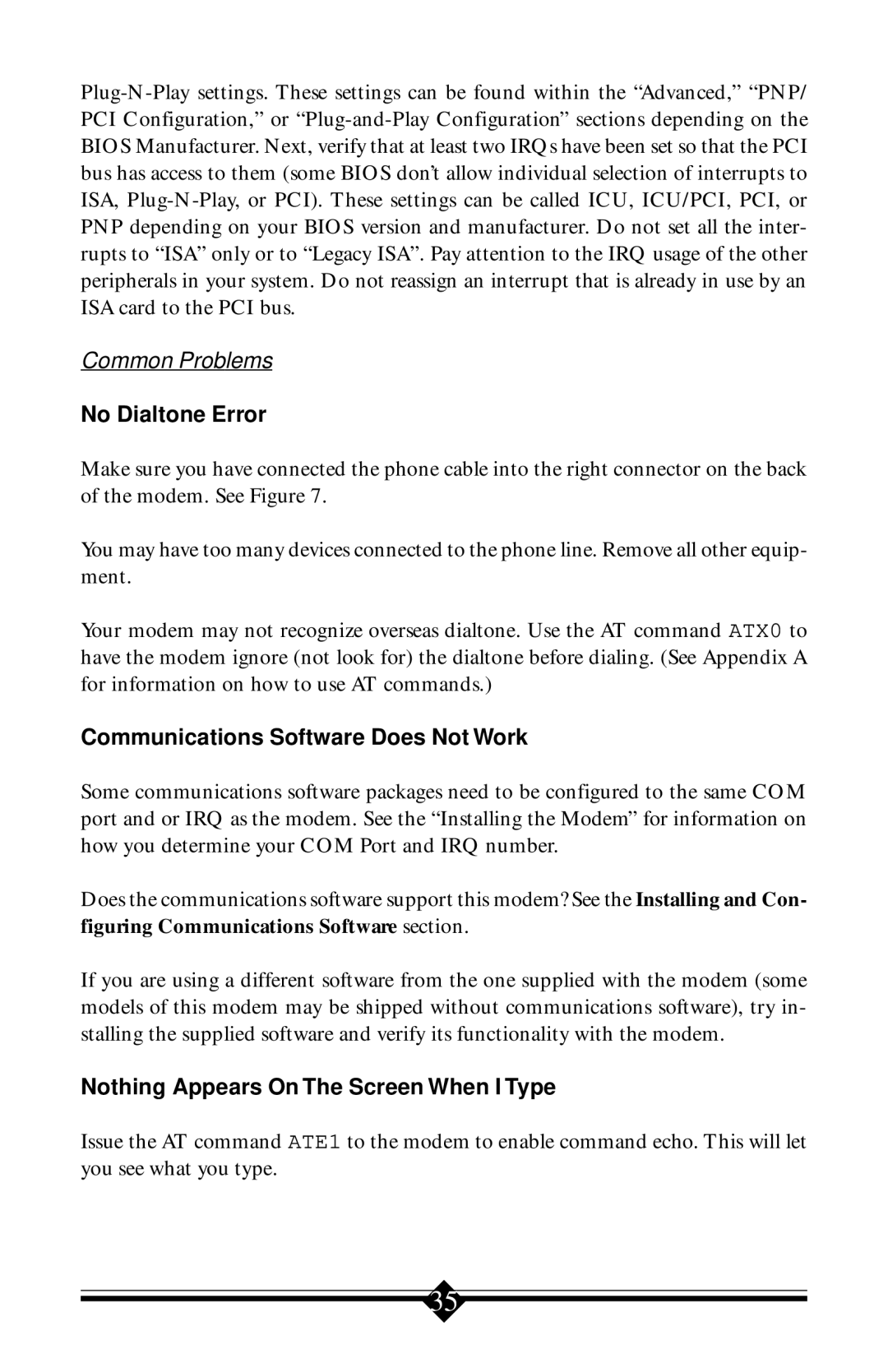Common Problems
No Dialtone Error
Make sure you have connected the phone cable into the right connector on the back of the modem. See Figure 7.
You may have too many devices connected to the phone line. Remove all other equip- ment.
Your modem may not recognize overseas dialtone. Use the AT command ATX0 to have the modem ignore (not look for) the dialtone before dialing. (See Appendix A for information on how to use AT commands.)
Communications Software Does Not Work
Some communications software packages need to be configured to the same COM port and or IRQ as the modem. See the “Installing the Modem” for information on how you determine your COM Port and IRQ number.
Does the communications software support this modem? See the Installing and Con- figuring Communications Software section.
If you are using a different software from the one supplied with the modem (some models of this modem may be shipped without communications software), try in- stalling the supplied software and verify its functionality with the modem.
Nothing Appears On The Screen When I Type
Issue the AT command ATE1 to the modem to enable command echo. This will let you see what you type.
35
